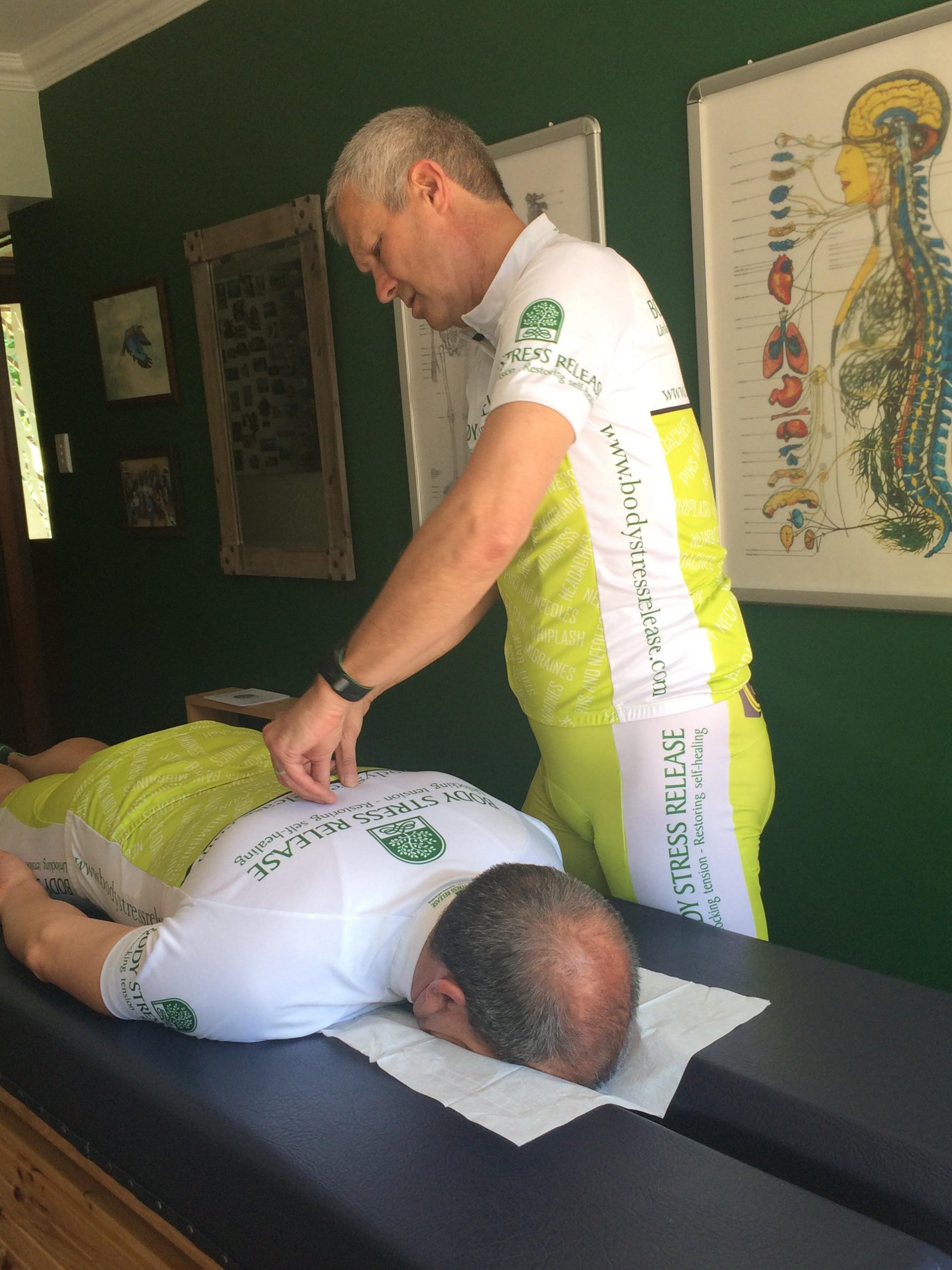Body Stress Release for Cyclists
Why BSR for cyclists – benefits
“As easy as riding a bike” – so riding a bike shouldn’t hurt right? If it does, something is wrong, generally its either with your fitness, riding equipment, bike fit or setup or your riding style.
BSR can assist with many of the aches and pains from prolonged cycling and also assist in recovery after falls or injury. Practitioners work with the body to assist recovery. Regular sessions assist in reducing stress build-up after riding, or assisting in injury recovery.

First contact point; No.1 – is the bum! Groin or gleut pain or excessive friction, is usually caused by the saddle shape or position.
A saddle that doesn’t fit your anatomy will be uncomfortable no matter where you sit on it. So the first check is that your saddle supports your weight on your ischial tuberosities (the hard bones you feel when you sit down) or the pubic rami (the pelvic bones further forward) not your soft tissue. Make sure the saddle is level and there is not too much reach causing the pelvis to roll forwards onto the perineal area and cause friction to sensitive areas.
Knee pain due to saddle or cleat position. Follow the old adage: If you have pain in the front of your knee, your saddle may be too low. If you have pain in the back of your knee, it may be too high. IT band pain in the knee (stabbing pain in the side of the knee) may also be from a saddle that’s too high.
Cleats too far forward or too far back can stress the knee joint, try to line up the first big toe knuckle in front of the pedal axel. Then make sure you pedal “heel down” in order to engage calves, hamstring, gleuts, relieving stress from the knee.
Second contact point; No.2 – the hands. Hand pain, Due to too much weight on your hands and/or too much (or too little) bend in your wrists. This can b e caused by a forwards tilt on the saddle so make sure it’s level, the handle bars maybe too low, and ensure the wrists only have a 10-15% back-bend.
Lower back pain, May result from a saddle that is too high or too low; poor core strength; mashing gears and/or too much differential between your saddle and bar height.
If your hips are rocking side to side as you pedal, your low back is taking a beating—lower the saddle until they’re stable.
Next, If it’s too low, your knee has to come up above hip level at the top of the pedal stroke, which also can flex and stress the low back. Next check your posture. You should aim to have a flat back with normal low-back curvature.
Third contact point; No.3 – the foot. Foot pain/cramping is usually from shoe fitting and/or cleat position. Cycling shoes should be snug, but many riders go overboard here and have them too tight.
If the cleats are too far forward, you’re pedaling too much with your toes. The toe joint flexor muscles are not meant to generate force and that can lead to cramping in the foot.
Riding Tips to avoid stress
- Fit
-
- Make sure you ride the correct sized bike.
- Ensure you have cycle shoes that clip in, or failing that foot cages for MTB riding.
- Make sure you get a professional Bike Fitter to set-up your bike, handle-bars, seat, brakes and gear shifters.
- Form
-
- Having the correct riding posture is key to avoiding aches and pains already mentioned.
- Most riders have something they need to work on, heels down, shoulders relaxed, chest out, relaxed hand-grip etc.
- Get a riding buddy to check you out.
- Function
-
- Function is all about how long and how far we ride and at what time intervals. If you do any activity too hard and too many times a week and this often leads to body stress.
- Training or racing schedules are a personal matter depending on a variety of factors, age, gender, ability, and aspirations!
- Generally stress builds in with over training and is often linked to a bad form or bike riding posture.
- Cyclists must listen to their bodies, foot cramps, and neck pains after long distance rides can mean there is an issue, which needs addressing. Don’t ignore the signs.

- Recovery
- A good scheme of rest and recovery is vital in a training schedule. Rest promotes muscle development and is vital in preventing stress and injury.
- Sleep also play a key role in recovery and in building a resilient immune system.
